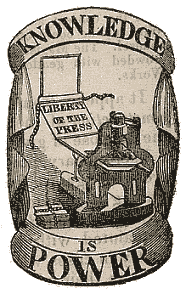BLOOMBERG.COM REPORTS: The dollar slid against high-yielding currencies, led by the Australian dollar, as China reported a surge in manufacturing and investors bet factory production in the U.S. accelerated. Oil, copper and gold climbed.
The so-called Aussie advanced versus 15 of the 16 most- traded currencies as of 10:12 a.m. in London, and the Swedish krona gained against all 16. Oil added 1 percent in New York while copper rose 0.7 percent in London and gold rallied 0.8 percent. Futures on the Standard & Poor’s 500 Index increased 0.7 percent, indicating the benchmark gauge for U.S. equities may rebound from its steepest weekly drop since May.
Manufacturing in China expanded at the fastest pace in 18 months, according to a purchasing managers’ index from HSBC Holdings Plc. The U.S. Institute for Supply Management’s manufacturing index probably climbed to the highest level in three years, a Bloomberg News survey showed. Australian Treasurer Wayne Swan today increased the government’s forecast for growth, fueling speculation the central bank will raise interest rates tomorrow for the second consecutive month.
“The markets have taken a step back and said: hold on, the global economy is recovering and we’re not in an environment where risk aversion is going to shoot up on a sustained basis,” said Daragh Maher, the London-based deputy head of global currency strategy at Calyon, the investment-banking arm of Credit Agricole SA.
The dollar fell most against the Australian currency, dropping 0.7 percent, sending the Dollar Index, which IntercontinentalExchange Inc. uses to track the greenback versus some of the U.S.’s biggest trading partners, down 0.1 percent.
The pound fell for a second day against the dollar on speculation the Bank of England will extend its bond-buying program this week to revive Britain’s shrinking economy. Sterling also snapped a five-day gain versus the euro as Royal Bank of Scotland Group Plc said it may be forced to sell assets “not initially contemplated” to shore up its finances.
The dollar’s decline buoyed commodities, while China’s manufacturing report revived optimism that the world’s biggest consume of metals will buy more raw materials. Copper for three- month delivery on the London Metal Exchange rose $45 a metric ton to $6,525. Crude oil for December delivery added 61 cents to $77.61 a barrel on the New York Mercantile Exchange. Gold for immediate delivery climbed as much as $8.35 an ounce to $1,053.76, the highest price since Oct. 26.
While this govt. devaluation of our money continues, the Congress plans to destroy the best health care system in the world.
If lawmakers were to create a public plan as envisioned by many congressional leaders, particularly liberal Democrats in the House, millions of Americans could lose their current employer-sponsored insurance, end up crowded out of private coverage, and find themselves enrolled in the new public "option."
The 40 percent levy on health care costs above $8,000 for individuals and $21,000 for families passed the U.S. Senate Finance Committee on Oct. 13. If the tax were to become law, experts said, government employees in New York would be hit hard because their powerful unions have negotiated benefits that go beyond medical and prescription drug coverage to include, among others, dental and vision.
The tax would be paid by insurers who then are expected to pass it along in the form of higher premiums, deductibles and co-pays.
The fight in Washington has revived questions about why government employees have such robust health care and whether it can be sustained when public treasuries have been depleted by the recession.
A review of benefits shows large disparities between the public and private sectors, with the exception of top executives and unionized manufacturing workers, who often have generous coverage.
Employee contributions to premiums also are lower in government. State workers and teachers pay between 5 percent and 20 percent depending on coverage type. Suffolk workers and Nassau workers hired before January 2002 pay nothing
"A lot of state workers would qualify because of the dental and vision, and the fact that health care is the fastest growing expense," said Kenneth Brynien, head of the 59,000-member state Public Employees Federation.
Senate legislation acknowledges this and provides a limited remedy. Tax thresholds for New York and 16 other high-cost states would be set higher in the first year and gradually decline to the national level over the next two years.
Over time, the tax would affect more government workers and people in the private sector. "We're going to get hit and so is just about everyone on Long Island who has health insurance," said Carl Korn, spokesman for the 600,000-member New York State United Teachers union.
As Republican minority leader says: "
We now have a choice: we can come together to implement smart, fiscally responsible reforms to improve Americans’ health care or we can recklessly pursue this government takeover that creates far more problems than it solves.
It’s clear where the American people stand on this issue. They‘re frustrated and fed up. The ‘stimulus’ bill isn’t working. Unemployment is rising. The debt to be paid by our kids and grandkids is exploding. And now, Speaker Pelosi’s 1,990-page government takeover of health care.No doubt the White House and Democrats in Congress will continue to insist that Republicans "have no plan." But Boehner's four proposals are contained in fleshed-out legislative form in several GOP reform bills. They really exist
Enough is enough. Breaking the bank and taking away the freedoms Americans cherish is not the answer to the challenges we face".
Tuesday, November 03, 2009
Subscribe to:
Post Comments (Atom)











No comments:
Post a Comment